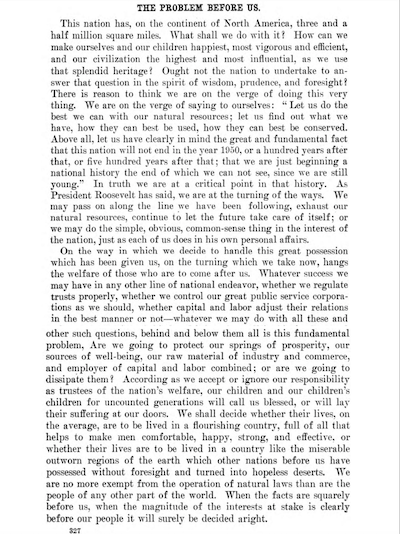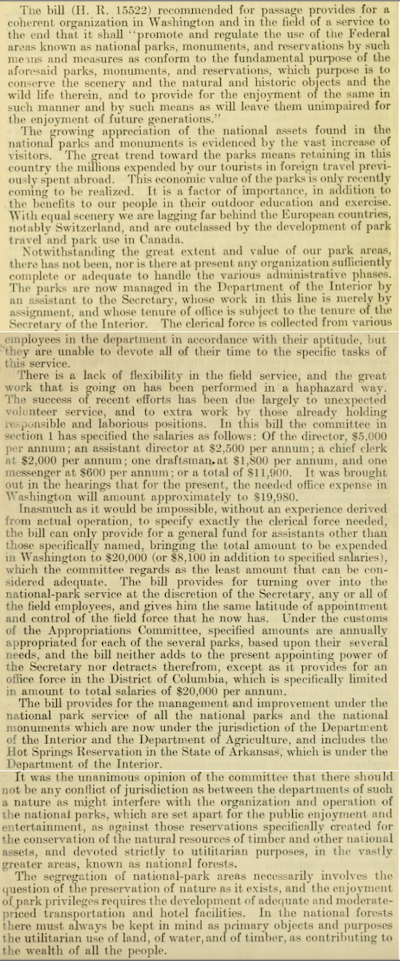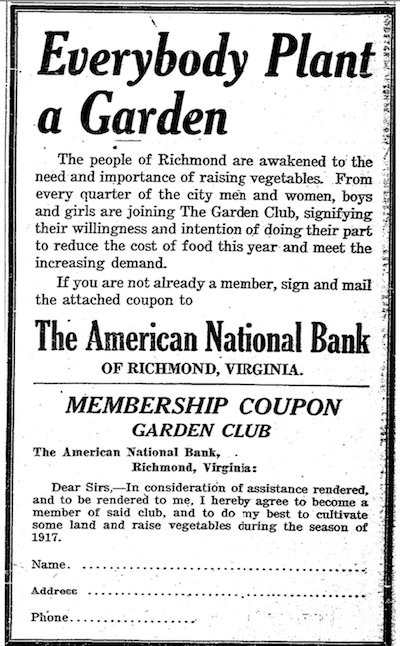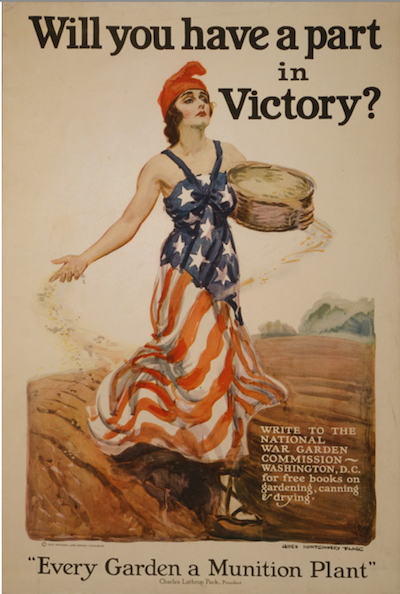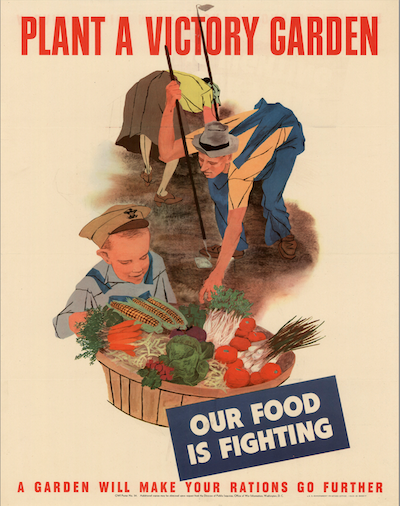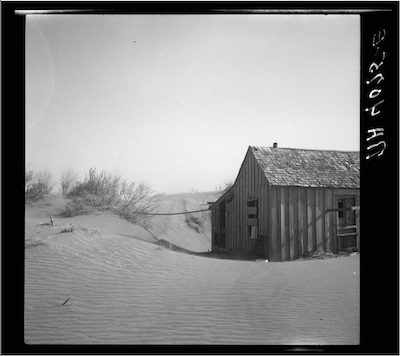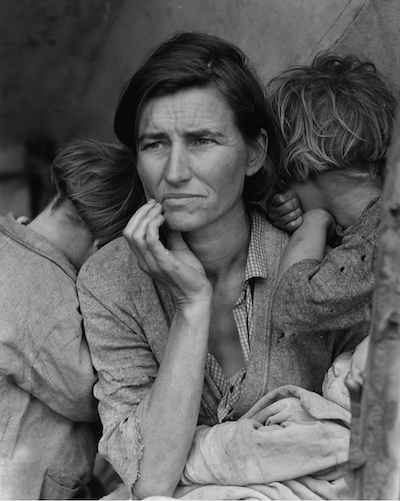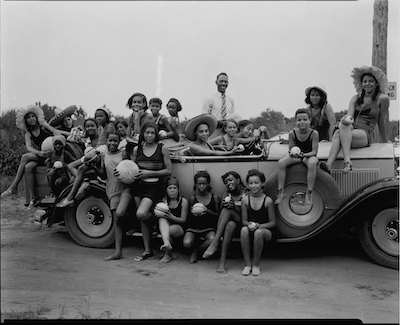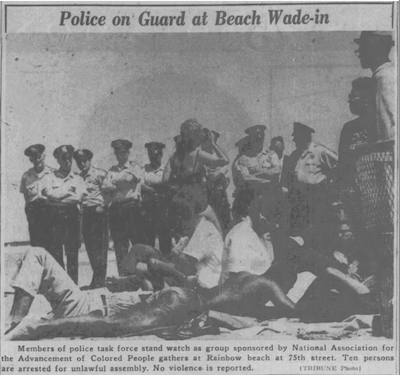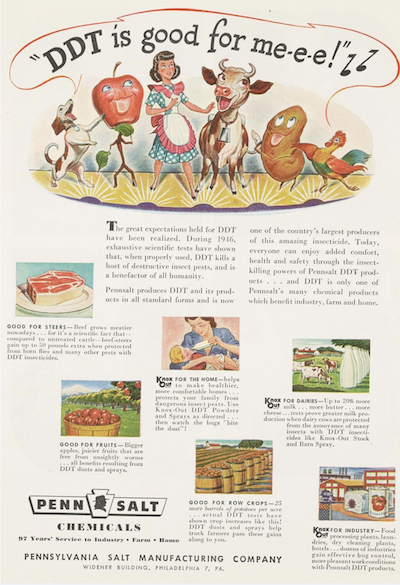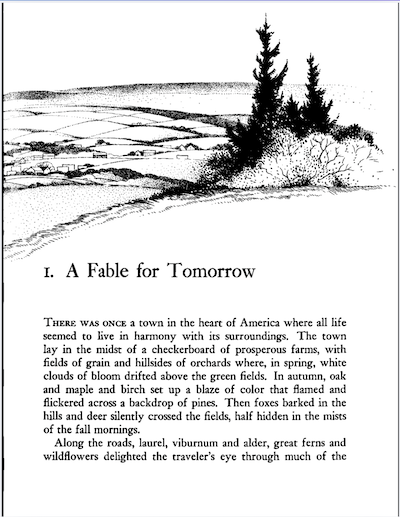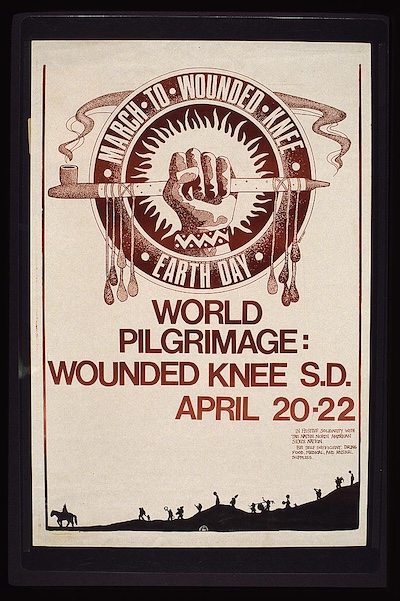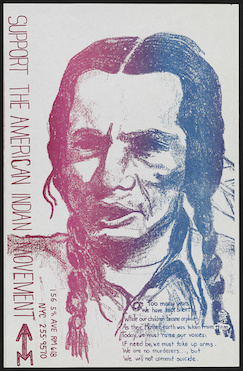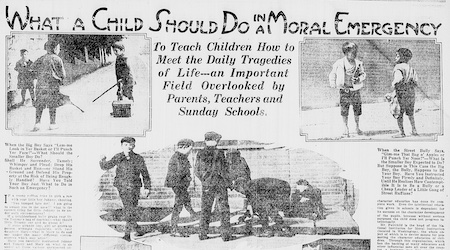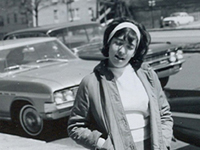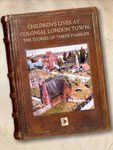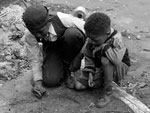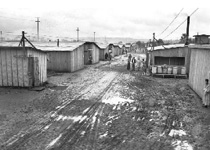Jacqueline Langholtz: Take a few minutes working in groups to figure out what’s in the pocket in front of them. So first, what is it? How would have it been used? And then lastly, who they think would have carried this pocket. So I am going to just give you the exact same challenge, take 10 minutes or so, talk within your group.
[Group 1:]
Teacher 1: Somebody’s a seamstress.
Teacher 2: Yes.
Teacher 1: Must do some cooking or . . .
Teacher 3: Had responsibility—
Teacher 2: Yes.
Teacher 3: —because I remember reading about that in the dependencies.
Teacher 2: Yeah, cause not everybody had the keys.
Teacher 1: No.
Teacher 3: Martha had the keys and there was one other.
Teacher 1: And there was a sewing little table in there.
Teacher 2: Also a number of geese were killed.
Teacher 1: I would think this would be like somebody who's either a supervisor or somebody that’s not the bottom person.
Teacher 2: No.
Teacher 1: This person writes so it couldn’t be a slave, right? Because they weren’t suppose to be able to write. Not that they couldn’t.
Teacher 3: Yeah, yeah.
Teacher 2: For our own eating 28 hams of bacon. Twenty-one shoulders and 27 middlings.
Teacher 1: Well, I think it’s a she based on the embroidery, on the fan.
Teacher 2: Sewing stuff.
Teacher 1: Right.
[Group 2:]
Teacher 1: I think we have it.
Jacqueline Langholtz: You got it.
Teacher 2: Yeah.
Jacqueline Langholtz: So that’s a—
Teacher 1: We think this is a slave child’s pocket.
Teacher 2: Or a child’s pocket.
Jacqueline Langholtz: What makes you say that?
Teacher 1: Well, you said they made nails.
Jacqueline Langholtz: Excellent.
Teacher 1: Marbles.
Jacqueline Langholtz: What were the marbles for?
Teacher 1: A game.
Jacqueline Langholtz: Yeah, keep going.
Teacher 2: Making extra money if, like, they made some extra nails or they were able to—
Jacqueline Langholtz: That’s right. And can I ask you would you have known that before you did your gallery tour and your house visit?
Teacher 1: No, because I had no idea they made money.
Jacqueline Langholtz: Yeah, that is a surprising fact to a lot of students and teachers to find money in the slave’s pocket
Teacher 1: And that they had china and stuff.
Jacqueline Langholtz: Yeah, so that’s a great opportunity for discussion because a lot of people will think this must be from someone else’s pocket or they’ll look at this and say ‘I thought it was a slave pocket but there's money in it,’ but you knew why there might be money in it, good for you.
Teacher 1: Fishing.
Teacher 2: We had said actually, originally, we thought this might be something that they either made like a handle or we thought is it something that shaped the, you know.
Jacqueline Langholtz: And once you know it, it’s right there in front of you but for students finding their way through this on their own, it’s a really good activity and they have a lot of fun with it. And then we get to you know dim the lights and we'll do a flint and steel show for them.
Teacher 1: I like this as a pre- and post- activity. That’s amazing.
Jacqueline Langholtz: Yeah, and photos for a lot of this are online, too. And you knew what this was?
Teacher 1: She did.
Teacher 2: Yeah, I did.
Jacqueline Langholtz: Good for you, do you have a name for it?
Teacher 1: Mouth harp?
Teacher 2: Something, yeah, it’s a mouth harp. I think it’s the mouth harp.
Jacqueline Langholtz: Yeah, so if you then had to group these items, too, or tell us what types of things you see—work, right, you see some home life, you see some entertainment, slave garden.
Teacher 1: Yeah, like this would be making a fire at home. This would be work.
Jacqueline Langholtz: And possibly spinning, this is flax.
Teacher 2: Okay.
Teacher 1: This would be play. This could be work or play.
Teacher 2: Or I was going to say, or extra food.
Jacqueline Langholtz: And there are some things that can be made and some things that are bought.
Teacher 1: Why would they carry seeds?
Jacqueline Langholtz: You tell me, I don’t know. And we don’t know that all of this was always carried.
Teacher 1: Why would they have seeds? Maybe they traded for them or something.
Jacqueline Langholtz: Well, do you remember Elizabeth Chew told us a story about the gardens—well, she said the garden's main function was not to supply all the food for the table and then she supplemented that with the story about the main house actually sometimes purchasing food from the slaves so purchasing cucumbers that they have grown or . . .
Teacher 1: So this boy maybe is going to plant some seeds to grow some food.
Teacher 2: So there are slave gardens.
Jacqueline Langholtz: Yeah, sometimes for themselves. So on a plot of land where they're able to supplement their rations, food that they're given by the house or maybe they choose to grow something that they know that the house could have a use for and they sell it back to the house.
Jacqueline Langholtz: Who thinks they know whose pockets they have? Just with a silent show of hands. I know, I know who my pocket represents. Great! Ah, wonderful.
Teacher 1: It’s a list and it’s written so we knew that person had to be educated—
Jacqueline Langholtz: Great.
Teacher 1: 'Cause even if they didn’t write it they had to read it.
Jacqueline Langholtz: And it’s a list of what kinds of things, can I ask?
Teacher 1: Ah, things they’re going to buy or—like it says kill chickens and stuff like that, you know, it would be like a grocery list.
Teacher 1: Like a grocery list, great.
Jacqueline Langholtz: Keys.
Jacqueline Langholtz: Can you hold those up so that we can all see them too? How would you describe that key set? If you said, oh, I left my keys on my desk, go and grab them. They look like . . .
Teacher 1: Like jail keys, no.
Jacqueline Langholtz: They’re big, right?
Teacher 1: They’re big, they’re bulky, they’re heavy. Must be somebody important 'cause not everybody had keys.
Jacqueline Langholtz: Great deduction, yes. And what’s that door like probably?
Teacher 1: Heavy.
Jacqueline Langholtz: It’s not a dainty little door, right. Great, what else is in your pocket?
Teacher 1: We had a fan and then an embroidered bag, so that led us to believe it was probably a female's bag.
Jacqueline Langholtz: Excellent. And that is a pocket that’s worn on the outside, tied around your waist, great. How about the big reveal? Whose do you think it is?
Teacher 2: Well, we thought it was Martha, Jefferson’s daughter.
Jacqueline Langholtz: Round of applause. Excellent. Yay. So, so why it, why is it Martha Jefferson Randolph’s pocket?
Teacher 2: Well, we knew based on what we had seen in the dependencies about the keys and the importance of controlling stores . . .
Jacqueline Langholtz: Great.
Teacher 2: And the list, keeping that. And then it was kind of also interesting, lots of sewing items.
Jacqueline Langholtz: Yep. You have spices in there, I heard you talking about the vanilla, you have a sewing kit—and carrying the keys, you’re right, even that phrase is responsibility in the house. So if I’m carrying the keys to the storehouse, I’m responsible for what’s inside there, and she would sometimes pass the keys over to a domestic house servant or a slave who needed to get in to retrieve something or she would get it for them. And this was apparently an exercise that each one of the granddaughters had to do for about a week and they write and complain about it because it’s such a pain that people are constantly coming and finding you and interrupting you because they need access to something in the storehouse. And it reminds me of when I was in high school or junior high and they made me carry around a fake baby for a while. I don’t know if that’s still done in schools but it was to teach that this is—being an adult is a lot of responsibility.
Teacher 3: Well, one of the things I knew 'cause I knew somebody that actually had one of these and could play it. It’s a mouth harp. So you can put it in your mouth and when you put it in between your lips and you go like this then you can change, like, and it makes a twangy kind of sound like—yeah, like a real twangy kind of sound so we thought that that would probably be some sort of recreational something that would be in this pocket.
Teacher 4: And then there's nails, and I remember somewhere we heard that they make nails in the—that the children make nails, so—
Jacqueline Langholtz: Yes, in the what though? You were about to tell us where?
Teacher 4: In the, I forget, the place where they make nails.
Teacher 3: The forgery.
Jacqueline Langholtz: Yeah, that's the forge, the blacksmith shop, great.
Teacher 4: And then fishing line and a hook and a bobber doohickey.
Teacher 3: And then a flint, which we didn’t know what this was, but you can make fire with it and you've got the flax—yeah, Chris helped us. At first we thought it was a handle on something, but you can actually hold it and you can do that and make fire.
Teacher 4: And it’s small so it’s not like an adult could use it because the way you use it has to be small for small hands.
Jacqueline Langholtz: I use it, I use it. That’s a typical striker size.
Teacher 4: Oh, it is? Oh, okay, I thought it was small.
Jacqueline Langholtz: But you’re right in saying that it's small, you’re also letting us know something about it, that it’s portable. Right? And if we are looking at pockets, everything wer'e looking at is something that is portable here.
Teacher 3: And then really quickly, interestingly, we had these little pieces—they look like Monopoly pieces, and so you can put them together and make a coin. Apparently you used to be able to break a coin apart to make change.
Jacqueline Langholtz: Not like a piece of candy bar, though, but cutting it.
Teacher 5: Like a piece of eight.
Jacqueline Langholtz: Piece of eight! So okay, there’s a story there. What do you know?
Teacher 5: They would cut it and they would weigh it so that they would make sure that they paid the right amount.
Jacqueline Langholtz: That’s right.
Teacher 5: 'Cause your silver was very precious to you.
Jacqueline Langholtz: That’s right. So cutting and weighing the silver. And a piece of eight—eight of those pieces go into a dollar piece.
Teacher 4: And then marbles, which are also recreation.
Teacher 3: So we thought that it was a slave's pocket, like a child slave or, you know, young person.
Jacqueline Langholtz: And they got it right. And we had what I thought was a great discussion, too, because often times if—even teachers—but students do this activity before they’ve gone through any part of the mountain or before they’ve gotten exposed to some of the things in the galleries, sometimes the money in that pocket can throw them off. They either think, well, I thought it was a slave's pocket, but there’s money in it, so it’s not, or they think the money is from someone else’s pocket, so it’s a great way to also teach about how Monticello has different roles and responsibilities for slaves here and that sometimes slaves were paid for their work. People like Joe Foset, the blacksmith, or John Hemmings who often times sold some of their work in town and then had some money from that or selling produce back to the house as Dr. Chew told us.
Teacher 1: We had a sampler with the alphabet on it. A game that has different levels of difficulty, either trying to catch it on top here or in the hole, which is next to impossible. We also had marbles in ours, as well. A little squirrel, which, that actually ended up being a game piece as well. We had a slate with the engraving—I don’t know if you call it chalk or not but—and we had a book in French that was on Anne of Cleves and that’s all we could really figure out because it’s entirely in French. And what was most helpful was a letter from Thomas Jefferson to Patsy that was written—it was dated 1783 in Annapolis and kind of went over his educational expectations for her while he was not at Monticello and that led us to believe that this was the pocket of Patsy, his daughter.
Jacqueline Langholtz: Yes, and would you mind for everyone’s intense enjoyment walking us through what the "miser of his time," Thomas Jefferson, recommends for how a young girl should spend her day?
Teacher 1: "From eight to 10 o’clock, practice music. From 10 to one, dance one day and draw another. From one to two, draw on a day you dance and write a letter the next day. From three to four, read French"—that explained the book—"From four to five exercise yourself in music. From five till bedtime read English and write"—looks like "writed." Communicate this plan to Ms. Hopkinson—
Jacqueline Langholtz: Her tutor.
Teacher 1: —"and if she approves of it, pursue it as long as I remain in Philadelphia. Activate her"—"articulate her affections, she has been a valuable friend to you and her good sense and her good heart make her valued by all who know her."
Jacqueline Langholtz: Excellent. Wonderful reading. So from family letters we learn a lot about the daily life—I mean, that’s the name of this program right, Daily Life at Monticello—for the family, for the staff, so for those who live in the house, for those who work in the house. We love that letter. And what do you think students—how do you think students react to that letter? What do they hear when they see it? They’re like, did she not eat? No, she ate. Did she not sleep? Right, but it sounds—you know, it sounds pretty stern. So who’s missing from this picture? El Jefe, right? Take us through what was in your pocket.
Teacher 2: Well, the first thing that was noticed was it's nice leather when we opened the pocket itself. The thing that we thought—we found really curious was the ivory for note-taking, for this. The glasses are really nice and they—
Jacqueline Langholtz: Ah, the spectacles.
Teacher 2: So they can be compacted a lot more. And this feels like very nice leather. There is a letter inside, it’s been sealed with the wax and the seal from here and it’s signed from Thomas Jefferson. It’s dated Monticello, April 16, and then the year 10, obviously 1810 because what other century could it be?
Jacqueline Langholtz: Right, but great question.
Teacher 2: And it says, "Dear Jefferson"—our question is who’s the Jefferson he’s writing to, it’s a person, he says they’re out of salad oil, he’s wondering if they have any in Richmond, if it’s good quality, they wanted—
Jacqueline Langholtz: They want a lot of it.
Teacher 2: They want a lot of it. I’m trying to think how many. If it’s mediocre then they want two or three. If it’s not so good just a single bottle just to serve them until he can get some from Philadelphia.
Jacqueline Langholtz: This is a man obsessed with salad oil, just so you know. Thomas Jefferson is obsessed with salad oil and this is—if it’s good stuff, get a lot of it, and if it’s bad, I need some, so just give me some and then we'll get some good stuff later on whenever we can. Yeah, that’s what that is.
Teacher 2: Just too fun. And then at the very end he says that everyone in my family is well except for Benjamin whose health isn’t too good. How are you in Richmond? And he said he’d probably see him in Richmond at some point in time. But we don’t know, at least we couldn’t figure out who Jefferson was. Was it his brother or somebody?
Jacqueline Langholtz: Well, that’s a great question and it’s someone in the family. Does anyone here—anyone here in a family where names are repeated in your family? Yeah, so the same thing here. And you’ve already seen that Martha’s name is repeated so his wife is Martha, his eldest daughter is Martha, and here his name is repeated—Thomas Jefferson Randolph is the grandson. He’s actually the executor of the will, so this is a letter from Thomas Jefferson to Thomas Jefferson Randolph.
Teacher 2: Randolph, the grandson.
Teacher 3: Provider of salad oil.
Jacqueline Langholtz: Provider of salad oil, that’s right.
Teacher 2: Okay, do we go through everything?
Jacqueline Langholtz: I like that next thing you’re grabbing, so please do.
Teacher 2: It’s a—this one is the quill—portable quill and the ink as well.
Jacqueline Langholtz: It’s a portable writing set. I love that. It’s so funny, too, because sometimes students ask us if it’s perfume or do you want to guess the other thing they were like—
Teachers: A flask.
Jacqueline Langholtz: A flask. No, no, no! Jefferson’s a man of letters, it’s for writing, yeah.
Teacher 2: Then there’s more money. If you want to show them the money.
Jacqueline Langholtz: Yeah, and more money compared certainly to what you had in your pocket, yeah. Excellent. And any sort of epiphanies or questions you have about Jefferson the man after looking through a recreated pocket for him?
Teacher 2: I just love seeing this after we’ve talked about it. This was awfully fun for me.
Jacqueline Langholtz: So what did we—what did we say about this? Or I don’t know if the whole group heard the discussion—
Teacher 2: It was—it was made from ivory and you can write on it with a pencil.
Teacher 4: How accessible was that?
Jacqueline Langholtz: I don’t know, that’s a great question. Jefferson often has things made specifically for him to his specifications. I, at least, haven’t seen this in other venues—David, I’m looking towards you. I mean I learned about it here but that’s not to say that no one else used it. Certainly other people and Jefferson is not alone in being obsessed with data collecting as a man of the Enlightenment, he’s doing this and he’s sharing data with other people, but this is his system of collecting, but you can’t buy these so they're at least uncommon enough that no one makes reproductions of them. So these are piano keys, this is ivory from piano keys that we bought and then they're just sort of tacked together. And he had very small ones for travel and slightly larger ones in the galleries too. And you’re right—you take shorthand notes on them in lead and then transfer it to the appropriate book, so maybe it transferred into the weather book or the garden book or the plantation book and then wipe it off and reuse it. I love these.
Teacher 4: Were some of Jefferson’s actually found onsite?
Jacqueline Langholtz: We have some of his upstairs but I don’t think they were ever buried and unearthed. I think they were always known to be his and treasured or at least known of. Let’s give them a round of applause. Wonderful job!
